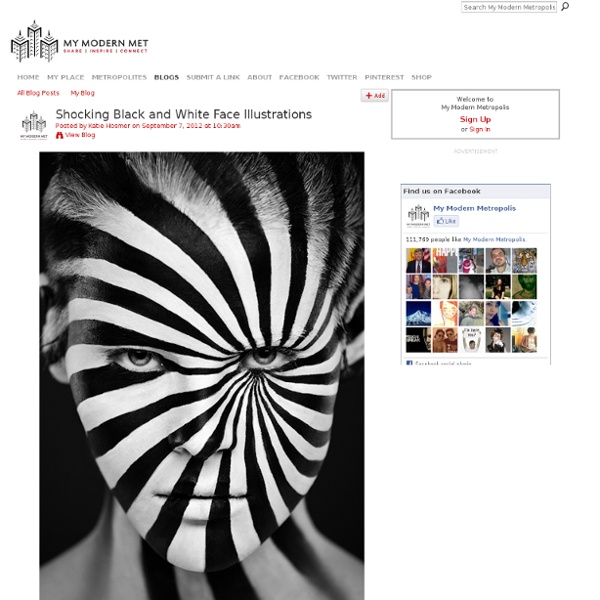Nature Masterpieces
Retour sur le photographe et metteur en scène canadien Gregory Colbert. Avec son projet et sa série Ashes and Snow, ce dernier nous présente des photographies aux couleurs sépias prises au cours de ses voyages. Des superbes images voyageant autour du monde grâce à un musée nomade, le « Nomadic Museum ».
Rashad Alakbarov Paints with Shadows and Light
Artist Rashad Alakbarov from Azerbaijan uses suspended translucent objects and other found materials to create light and shadow paintings on walls. The best part is that you can easily create something similar at home – all you need is one or two lamps and some items from your desk. The stunning light painting below, made with an array of colored airplanes has found its way to exhibitions like the Fly to Baku at De Pury Gallery in London. Comments comments
1110: Click and Drag
This comic is a take on how vast and rich the world is, and on the thrill of exploring it. The world can be described as sad, as well as it can be described as wonderful, even if this seems a bit contradictory, just because there are so many different things happening in it. Cueball comments about this, and the title text invites the reader to, with their mouse, click and drag the inside of the last panel, and by dragging and dragging, explore what is hidden outside that panel. The image displayed at first turns out to be part of a huge landscape, filled with big or small things, humorous details, people here and there, cave mazes, things floating in the air, jokes and references, unexpected things, relaxing views, etc. The fact that we only see a small part of the landscape at once refers to the idea that we cannot in real life comprehend the whole world altogether, but only what is around us and/or in the range of our understanding at the time. This is great! [Expand] [edit] ZIP upload
untitled
butterfly
Beauty of Desolated Spaces
Voici « Fragments » le nom de ce court-métrage sans narration qui cherche à capturer la beauté et le mystère de différents endroits isolés et abandonnés. Des images splendides de Monika Delgado et Mickey Todiwala sur le morceau « Lament » de Jacaszek, à découvrir dans la suite de l’article.
Judith Ann Braun's Fingers Are Magical
With an art career spanning more than three decades, Judith Ann Braun has tested the limits of her artistic musculature. She began as a self-described “realistic figure painter,” and worked through the struggles common to anyone who endeavors upon an artistic pursuit, that of searching for one’s own voice in the chosen medium. Fast forward to the 21st century where the evolution of Braun’s work has brought us to the Fingerings series, a collection of charcoal dust landscapes and abstracts “painted” using not brushes but her fingertips. Share With Your Friends
(Not BBQ) Fetching Component Images of xkcd Comic 1110
This post is not about barbecue. If you come here for those posts, thanks! But this isn't one of those. This is a nerd thing. The xkcd comic today is amazing. It also inspired me to "get excited and make things" (oh wait, I'm mixing Wil Wheaton up with Randall Munroe), so here is a Python script to download all the component images of the comic and stitch them together in (very) scaled-down single image file. Once you run this (and it should take a while to complete) you'll have the comic pieces at full resolution (PNG files) and a 10M-ish JPEG file with at 1/16th resolution of the whole comic. Your could fool with this script to make the assembled image higher-res if you like. I release this script under the terms of the GNU General Public License version 3. Please don't use this to abuse the terms of the CC-BY-NC license under which xkcd is published. facebook twitter email sharethis pinterest
untitled
Mork Animation
Le créatif Phil Borst nous dévoile une de ses dernières réalisations. Le travail de l’américain est magnifique, jouant avec les formes et les couleurs. Sur une musique de Dustin Ohalloran, le rendu appelé « Mork » est à découvrir en vidéo dans la suite de l’article.
Riusuke Fukahori Paints Three-Dimensional Goldfish Embedded in Layers of Resin
First: watch the video. Japanese artist Riusuke Fukahori paints three-dimensional goldfish using a complex process of poured resin. The fish are painted meticulously, layer by layer, the sandwiched slices revealing slightly more about each creature, similar to the function of a 3D printer.
untitled
You might also like my other projects: info-beamer, a Raspberry PI signage player or Miners Movies A zoomable visualization of xkcd - Click and Drag. Visualization created by dividuum using Leaflet
untitled



